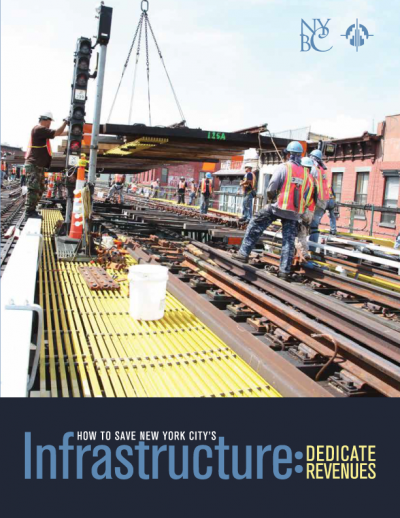
How to Save New York City's Infrastructure: Dedicate Revenues
A Growing Debt Burden
Together, the total debt incurred by the City and its Water Finance Authority was $98 billion in 2011; today it is about $100 billion. The City expects it to approach $109 billion by 2017.
Servicing this debt is a major fixed expenditure facing the taxpayers of the City of New York. Recently, the cost of repaying debt has absorbed about $5 billion out of the City's general revenues annually. The City forecasts it will spend about $7 billion a year between 2014 and 2017 servicing its debt.
To its credit, the City – indeed all levels of government – has been able to take advantage of interest rates that are at post-World War II lows, allowing it to access more capital and maintain a robust spending program. But this very low rate climate is already starting to recede.
The major rating agencies have advised that the City should devote no more than 17 percent of its tax revenue (excluding user fees) to debt service. Generally, the City's debt service takes up around 15 percent of tax revenue, but it is projected to take up an increasing share in the coming years.
The MTA has also seen a rapid run-up of debt. The State Comptroller recently estimated that the MTA's annual debt service payments are likely to rise from 16 percent of all revenue in 2011 to 22 percent by 2018. And this figure does not include any new financing required for the 2015- 2019 capital program, which he estimated could require well over $20 billion in new money.
While the MTA benefits from a number of dedicated taxes and fees that help support the capital program, those revenues are volatile and do not enjoy the same level of protection as the revenues generated by the WFA. In fact, over the past four years, the State Legislature has approved three diversions and outright reductions to dedicated tax and fee revenues that had already been appropriated. Further, the regional Payroll Mobility Tax, which provided the MTA with $1.5 billion in revenue in 2012, faces a lawsuit challenging its constitutionality, but the State continues to collect the tax while the case moves through the courts.
Even the Port Authority, which receives a predictable set of revenue streams, is feeling the pinch. Faced with the massive cost of rebuilding the World Trade Center, along with the ongoing need to upgrade its core facilities, the Port recently enacted a series of fare and toll hikes, which was the subject of a lawsuit and drew intense scrutiny from elected officials on both sides of the Hudson River.



